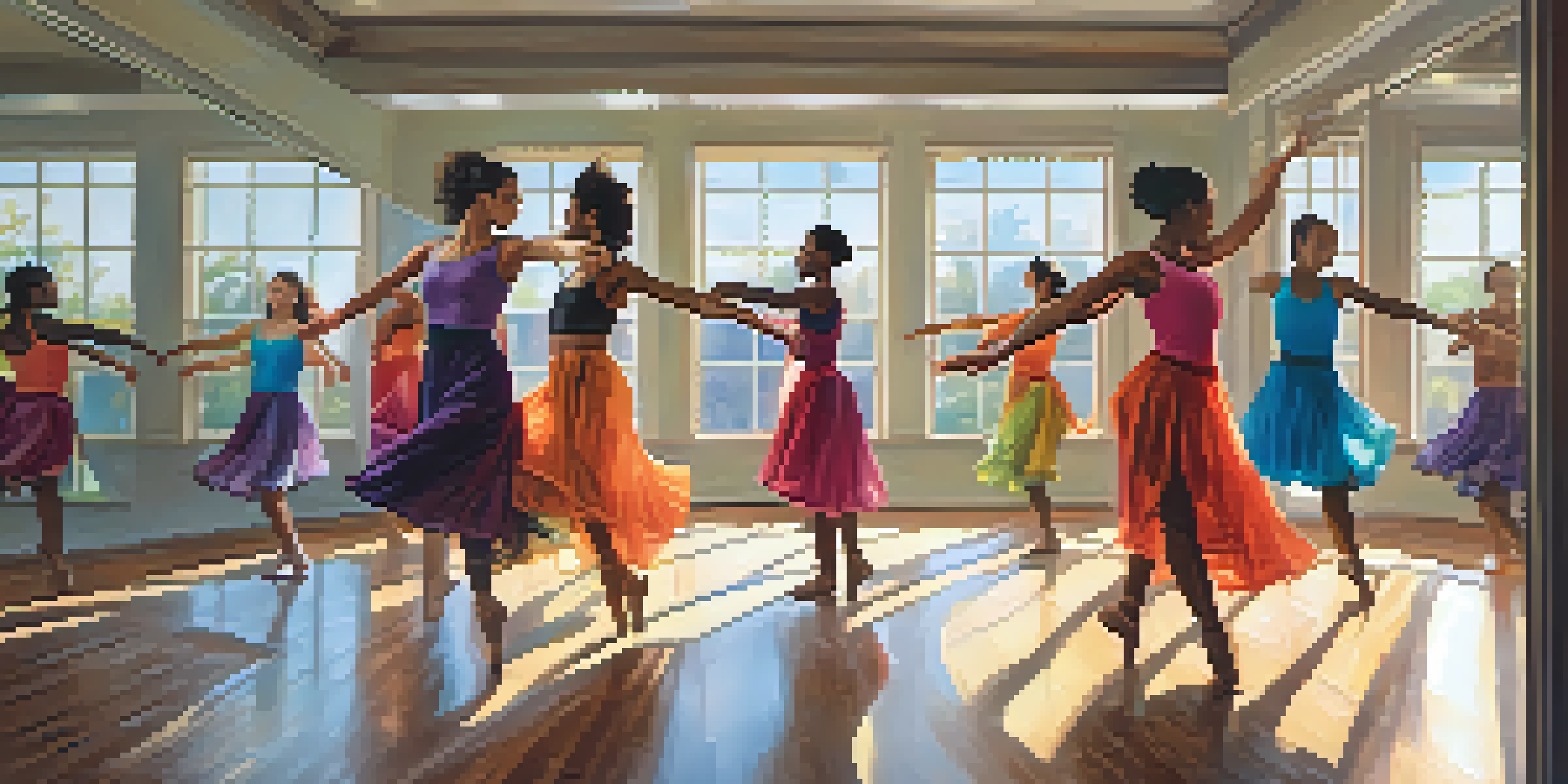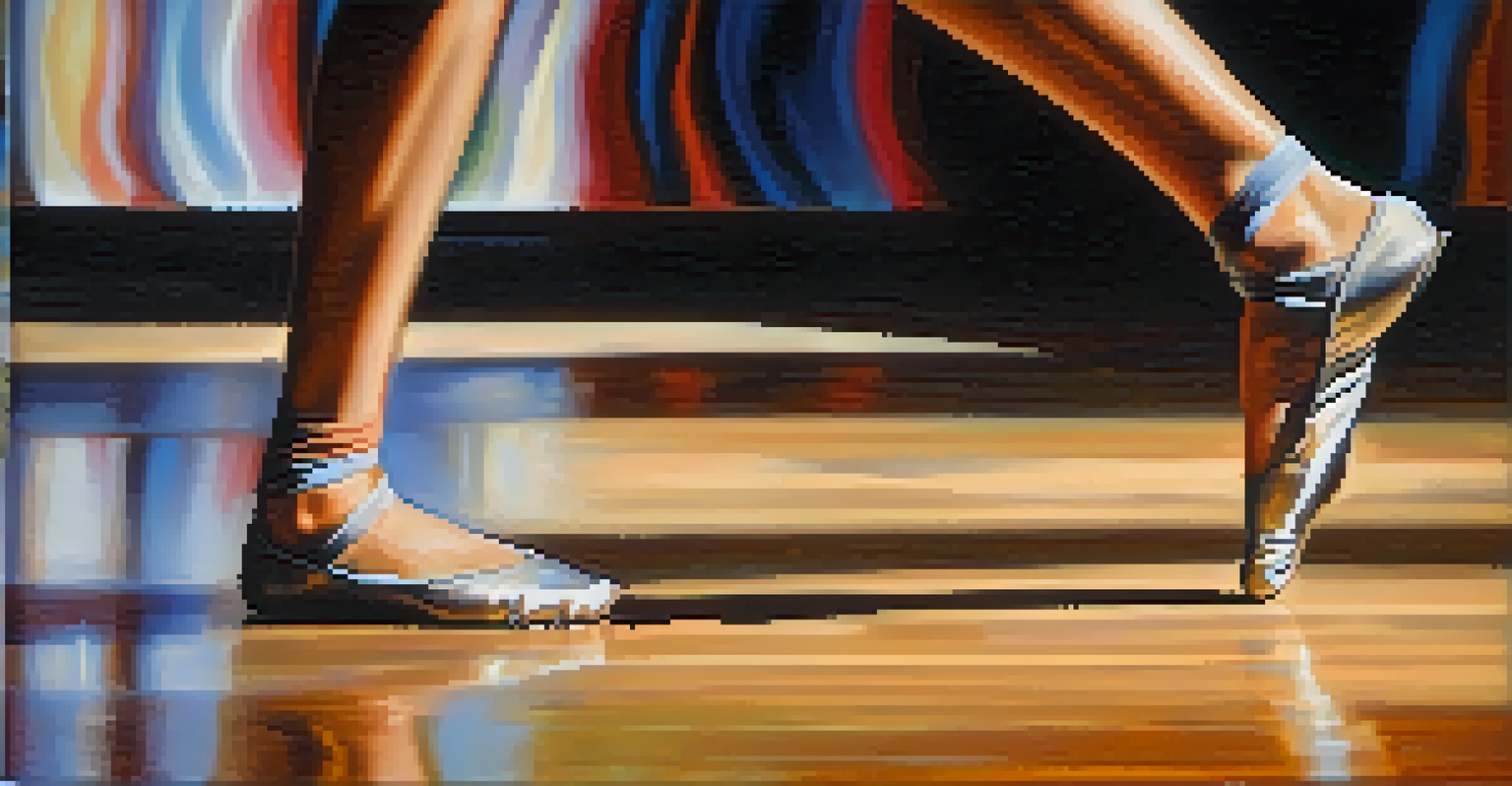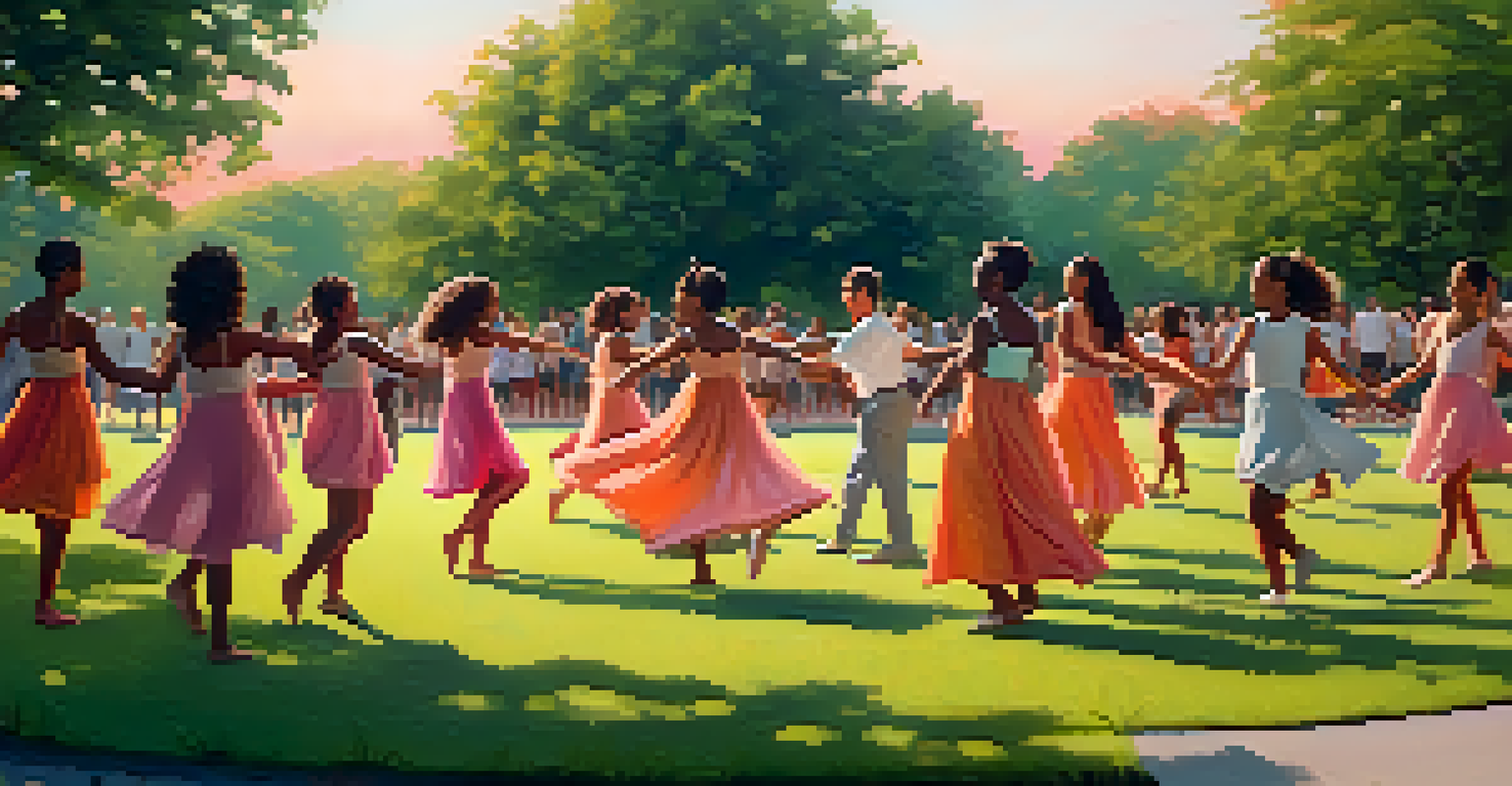Boosting Self-Esteem Through Dance: A Transformative Journey

Understanding Self-Esteem and Its Importance
Self-esteem is essentially how we perceive ourselves and our worth. It's the quiet voice inside our heads that tells us whether we are good enough or not. High self-esteem allows us to take risks and embrace opportunities, while low self-esteem can hold us back from reaching our full potential.
Dance is the hidden language of the soul.
Many people struggle with self-esteem issues, often stemming from past experiences or societal pressures. These feelings can lead to anxiety, depression, and a general sense of dissatisfaction with life. Understanding the roots of low self-esteem is the first step toward overcoming it.
By recognizing the impact that self-esteem has on our overall well-being, we can begin to explore effective ways to improve it. One such method that has gained popularity in recent years is dance.
Dance as a Means of Expression and Empowerment
Dance is a powerful form of self-expression that transcends verbal communication. It allows individuals to convey emotions, stories, and experiences through movement. This form of expression can be liberating, helping to unlock feelings that may have been bottled up for too long.

When we dance, we often enter a state of flow where worries fade away, and we become immersed in the rhythm and movement. This sense of freedom can be incredibly empowering, reminding us of our capabilities and strengths. Through dance, we can reclaim our bodies and reconnect with ourselves.
Self-Esteem Shapes Our Lives
Our perception of self-worth influences our overall well-being and can either empower us or hold us back.
Moreover, dance fosters creativity, encouraging individuals to explore new styles and movements. This exploration can boost confidence as dancers learn to embrace their unique styles and abilities, contributing to a more positive self-image.
The Community Aspect of Dance
One of the best aspects of dance is its ability to bring people together. Whether in a formal class or a casual gathering, dancing often creates a sense of community and belonging. This connection with others can significantly enhance feelings of self-worth and acceptance.
We are not what we know but what we are willing to learn.
When we dance with others, we share not just movements but also experiences and emotions. This camaraderie can help combat feelings of isolation and loneliness, which often accompany low self-esteem. Support from fellow dancers can make a world of difference on one’s journey to self-acceptance.
In a supportive dance environment, individuals can celebrate each other's progress, fostering a culture of encouragement. This nurturing atmosphere can help participants feel valued and appreciated, reinforcing their sense of self-worth.
Physical Benefits of Dancing
The physical benefits of dancing are well-documented and contribute to overall well-being. Regular dance practice improves strength, flexibility, and coordination, which can enhance body image. Feeling good in our bodies can have a profound impact on our self-esteem.
Moreover, dance is a fun and engaging way to exercise. Unlike traditional workouts, dancing often feels more like play than a chore, making it easier to stay committed. As individuals grow stronger and more agile, they may find themselves brimming with confidence.
Dance Fosters Community and Growth
Engaging in dance not only enhances self-expression but also builds connections, boosting feelings of acceptance and belonging.
Additionally, the endorphins released during physical activity can elevate mood and reduce feelings of anxiety and depression. This chemical boost can create a positive feedback loop, where improved mood leads to increased self-esteem and vice versa.
Setting Personal Goals Through Dance
Setting and achieving goals is a powerful way to build self-esteem, and dance provides an excellent platform for this. Whether it's mastering a new dance move or performing in front of an audience, each milestone can boost confidence. These achievements remind us of our capabilities.
The process of setting goals also encourages individuals to step out of their comfort zones. When we challenge ourselves, we often discover strengths we didn’t know we had. This sense of accomplishment can be incredibly validating and uplifting.
Furthermore, celebrating small victories along the way creates a sense of progress. Each time we tick a goal off our list, we reinforce our belief in ourselves, paving the way for even greater achievements.
Dance and Mindfulness: A Path to Self-Acceptance
Dance can serve as a form of mindfulness, helping individuals focus on the present moment. When we dance, we become attuned to our bodies, movements, and emotions, allowing us to step away from negative thoughts. This practice of being present can cultivate a deeper sense of self-acceptance.
Through mindful dancing, individuals often find themselves letting go of self-judgment and embracing their unique styles. This acceptance can translate into better self-esteem as they learn to appreciate themselves for who they are, flaws and all.
Mindfulness Through Movement
Dance serves as a form of mindfulness, helping individuals embrace their true selves and cultivate self-acceptance.
Additionally, mindfulness in dance encourages self-compassion. As dancers become more forgiving of themselves during practice, they may find it easier to extend that compassion to other areas of their lives, further boosting their self-esteem.
Transforming Lives: Inspiring Stories from Dancers
Many individuals have experienced transformative journeys through dance, and their stories are truly inspiring. From overcoming shyness to gaining confidence, dance has helped countless people embrace their true selves. These personal accounts highlight the profound impact dance can have on self-esteem.
For instance, a young woman who struggled with body image found solace in a dance class. As she learned to express herself through movement, she began to see her body in a new light, celebrating its strength rather than critiquing it. Her journey is just one of many that underscore the life-changing power of dance.

These stories remind us that we are not alone in our struggles and that change is possible. Dance can be a catalyst for personal growth and self-discovery, leading us to a more confident and empowered version of ourselves.